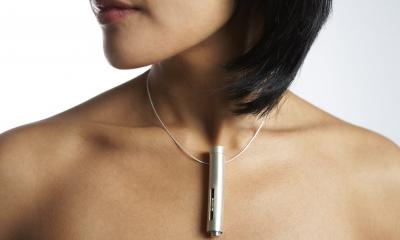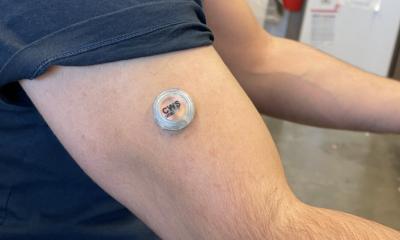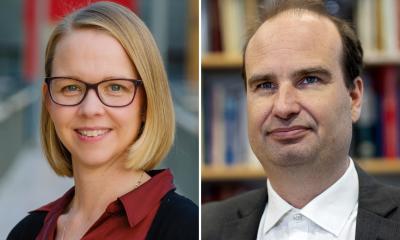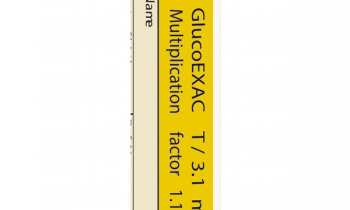
Source: Photographer Matt Harvey, © Blamey Saunders hears.
Interview • Tectales
Humanising wearable health technologies
Designer Leah Heiss considers her work as creating “emotional technologies”, i.e. wearable devices based on human-centred design principles. For her, empathy is everything!
Interview: Sascha Keutel
Leah, why is the emotional impact of wearable technologies important to you and the people you design for?
Most companies have a very technology-first approach that is focused on fast turnaround pitches, investment, getting things to market very quickly. This does not allow for meaningful engagement with the people who we hope will actually wear our technologies. If we are going to design devices that will change people’s lives we need to make sure that the devices are integrated into those lives.
I find it disturbing that so much design effort, energy and money is put towards the aesthetics of devices to count the steps of healthy people. So few resources are put towards improving devices for people who are really unwell. The attitude seems to be that if you have a disability you suddenly have no interest in aesthetics – or like beige. This, of course, is untrue. In my experience, it is through integrating the emotional experience of technology users into the development of wearable health technologies that we can begin to humanise these devices.
That is why I focus on creating wearable health technologies that resonate with us emotionally but also keep us healthy. I call these emotional technologies. Central to creating emotional technologies is engaging deeply with the people who are going to use the device – understanding what they would really like in their lives, and tailoring the technology around that. While smartwatches are fine, many wearable health technologies such as cardiac Holter technology or falls monitors are created with efficiency and hygiene as paramount concerns, with little regard for how the wearer will feel using it. This leads to devices that have little resonance with the emotional experience of users.
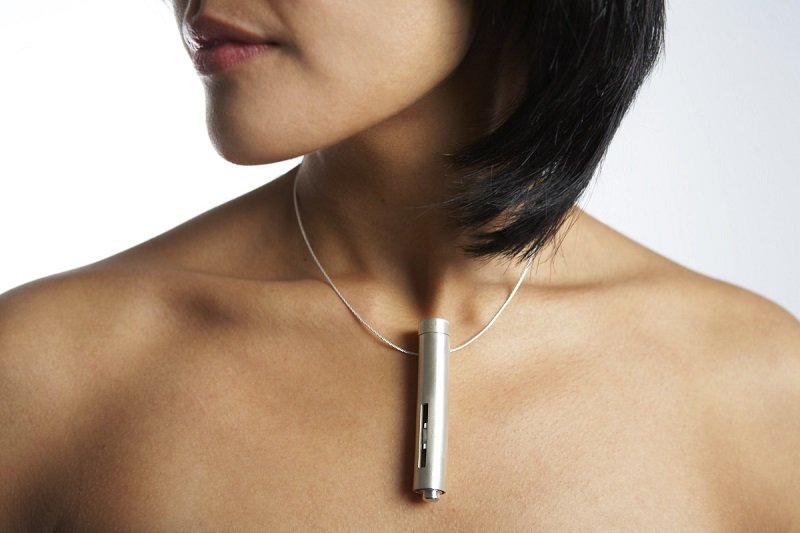
Source: Photographer Narelle Sheean, © Leah Heiss.
What does it mean to humanise wearable technologies?
Humanising wearable health technologies is about creating technologies that resonate with people on an emotional level but that also function medically and technically. If we can design technologies that people want to wear, want to integrate into their lives, the medical aspect of them becomes secondary. This has the impact of improving compliance but without a ‘big stick’ approach. In my projects I use four interlinked methodologies for humanising wearable health:
- Look for precedents outside the field in order to disassociate wearable health tech from existing languages of disability or impairment. For instance Smart Heart and Facett were inspired by mineralogy while Incus was modelled on a bean form.
- Give design a seat at the table for the duration of technology development. This has the impact of balancing human experience considerations alongside technical concerns throughout development and is manifest in the creation of more human-centred technologies.
- Bring people into the design process: I engage with the emotional experience of technology users throughout the design process and bring their thoughts and wishes into the design of wearable health technologies.
- Use the power of prototyping to continually iterate towards better project outcomes. I also use iterative prototypes to bring teams together, and keep the design process moving.
Why is humanising wearable technologies important?
It is important to bring people into the creation of health technologies. As mentioned above, too many decisions are made about technical functionality and hygiene without correlating these with human experience factors. While these are absolutely crucial to the success of a product so is the resonance of the final product with people’s real lives. More than design thinking – which can be a two hour workshop at the beginning of the product development – this area needs ongoing design input to ensure that our health technologies are adopted by their users.
It helps us to empathise with the lived experience of people that will wear our devices and to seek to understand the emotional experience that they have in living and working with a technology. When we understand the stigma, shame and embarrassment that some people experience every day when using a wearable technology, we can start to create better devices that are more likely to be integrated into the lives of these people.
Empathy is also central in the way that I work in interdisciplinary teams with experts from engineering, nanotechnology, manufacturing, audiology, etc. By having a ‘designer at the table’ for a big chunk of the development process we can ensure that technical issues are cross-referenced with human experience considerations, resulting in better health technologies with higher uptake. If I can understand the problem from the perspective of my collaborator, it enables us to reach common ground more quickly.
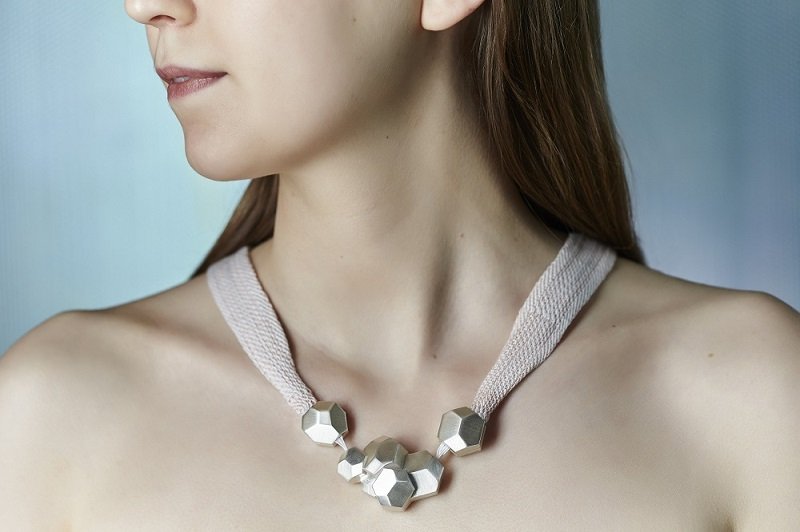
Source: Leah Heiss, Keely Macarow and Paul Beckett. Photographer Narelle Sheean, © Leah Heiss.
Is it actually possible to give jewellery the power to heal?
Yes! Jewellery is something that people want to wear, why not augment it with the microelectronic or nanotechnological capability to keep us well and healthy? It has a prime position next to the body and most importantly, it is chosen for its resonance with people. People have very strong associations with their jewellery. My work is interested in whether we can create augmented jewellery or augment existing jewellery so that it retains its sentimental value but also incorporates new value in terms of providing diagnostic, drug delivery or health-sensing capability.
Profile:
Dr Leah Heiss is a Melbourne-based designer working at the nexus of design, health, and technology. In total Leah has won five Good Design Awards and her design work is part of the Museums Victoria heritage collection. Leah’s work has been exhibited at the Melbourne Museum, Gallery of Modern Art in Brisbane and at other venues locally and globally. She teaches through RMIT’s Masters of Design Futures and the Interior Design honours program.
The interview was published first on Tectales.com!
04.11.2020



